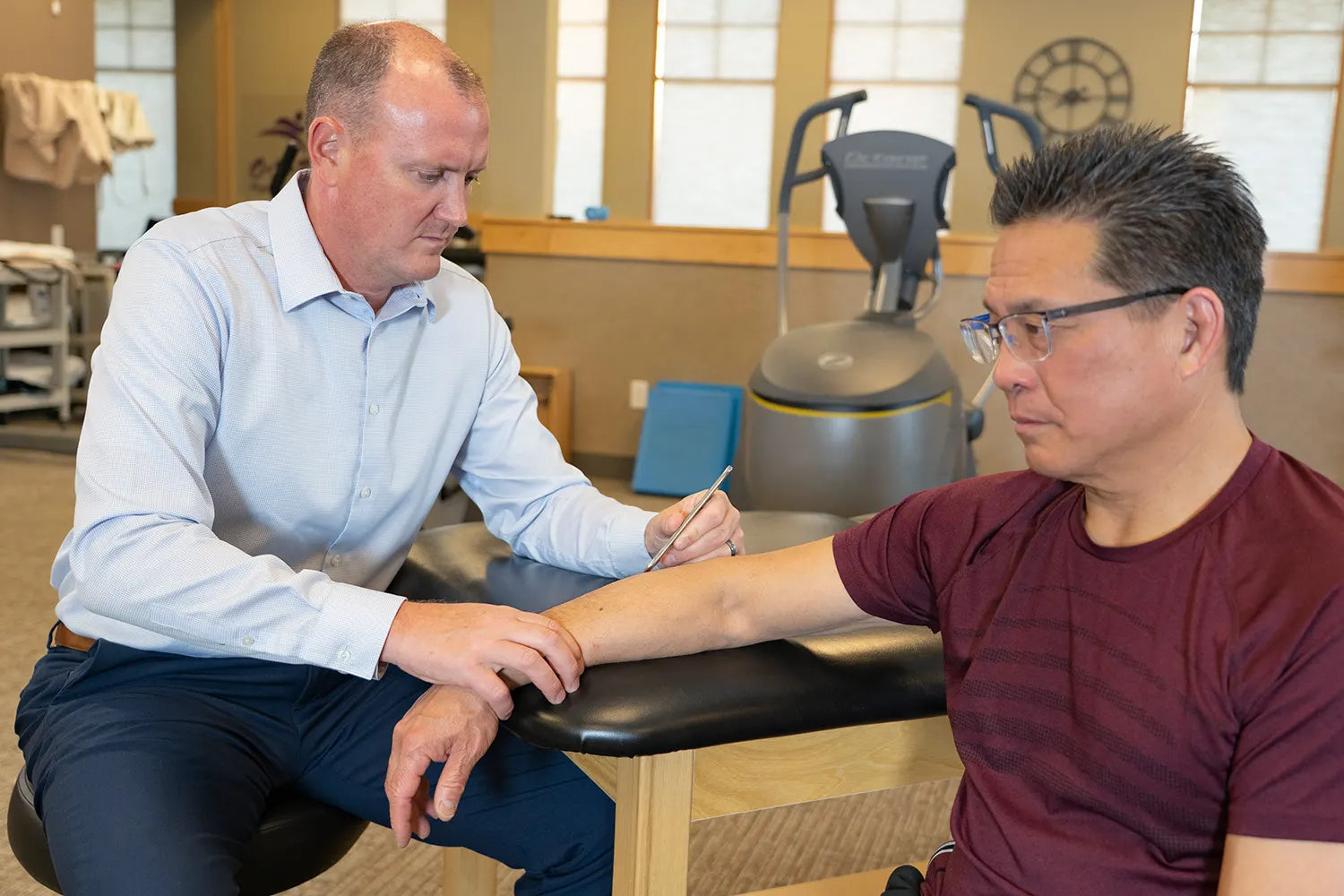In healthcare, there’s an abundance of scientific terminology and tricky acronyms. Most of these may not be of particular concern unless they are used in conjunction with your personal health, of course. Then you’ll want to pay close attention to and understand the terms that apply to your specific conditions, injuries or diseases.
Because Stā Active’s Fiix Elbow Program treats tennis elbow (known in the medical community as lateral epicondylitis), here we address exactly what epicondylitis is.
Epicondylitis Is:
According to MedicineNet, epicondylitis is inflammation or damage to the area of an epicondyle of bone. An epicondyle is a projection of bone above a condyle (a rounded prominence at the end of a bone, where one bone connects to another bone) where ligaments and tendons are attached.
The human body has epicondyles on two bones: the humerus, which makes up the upper arm from the shoulder to the elbow; and the femur, which is the thigh bone from the hip to the knee. Both bones have two epicondyles: medial on the inside closest to the body’s midline, and lateral, located on the outside of the bone.
The suffix “-itis” refers to inflammation, which is defined by MedicineNet as a localized reaction that produces redness, warmth, swelling and pain as a result of infection, irritation or injury. The epicondyle is the location of this inflammation in the tendons or ligaments.
Common types of Epicondylitis:
Two common types of epicondylitis occur in the arm – tennis elbow and golfer’s elbow. Tennis elbow (lateral epicondylitis) is an overuse injury to the area of the lateral epicondyle of the elbow at the end of the humerus bone, while golfer's elbow, also known as medial epicondylitis, is a similar overuse injury, but occurs at the medial epicondyle of the upper arm bone.Both conditions tend to afflict primarily the dominant arm, starting gradually and worsening over time. They are triggered by repetitive motions of the forearm and wrist, which eventually cause inflammation or partial to full tears of the tendon, leading to pain that lingers and typically doesn’t go away on its own.
And it’s not just tennis players and golfers who suffer from tennis elbow and golfer’s elbow. These injuries are experienced by people who perform repetitive movements with their arms – for leisure or occupation – such as fitness enthusiasts, musicians, gamers, manufacturing and construction workers, mechanics, carpenters, cooks and more. Common age of onset is between 40-60, with both affecting millions of people in the U.S. each year.
Symptoms of tennis elbow and golf elbow are similar, and include:
Pain when using the forearm and wrist
Dull ache or stiffness at the elbow
Weak grip strength and difficulty grasping or lifting objects
Numbness or tingling in fingers
Treating Epicondylitis:
Various treatment options are available for lateral and medial epicondylitis. Rest, ice and over-the-counter painkillers are usually the first choice in self-care. Sufferers also may try straps or braces, or sleeves or splints, which can provide short-term relief.Professional care includes physical therapy, with stretching and strengthening exercises, instrument-assisted soft tissue mobilization (IASTM), ultrasound, TENS/EMS, acupuncture and injections. Surgery is generally not necessary for most cases of tennis and golfer’s elbow.
When it comes to tennis elbow, an exciting new treatment option is available from Stā Active. The unique Fiix Elbow Program automates the clinical IASTM therapy by delivering concentrated, repetitive linear strokes that break down adhesions and scar tissue to provide pain relief and promote functional restoration.
Users benefit from convenient, at-home treatment that directly addresses the cause of pain, with an effective, efficient regimen of 10 minutes, three times per week for eight weeks.



Share:
Tennis elbow from DIY projects
Are tennis elbow straps effective?